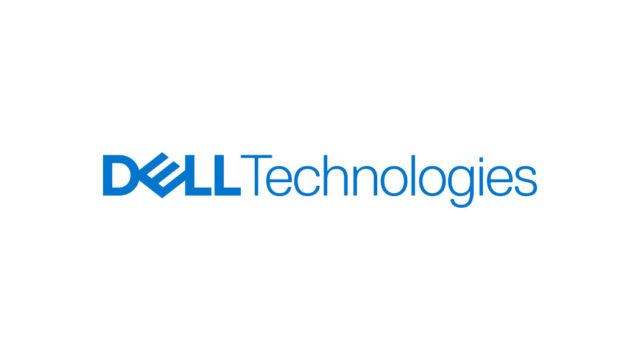“Dawn will create new digital worlds so that complex problems can be simulated, tested and solved at speed. This is a new era for UK compute.”
Dr Paul Calleja, Director of Research Computing Services
At the world’s first AI Safety Summit, hosted by the UK in November 2023, the government announced investment that would make British AI supercomputing 30 times more powerful, thanks to a pair of supercomputers named Dawn and Isambard.
The supercomputers Dawn and Isambard, based respectively in Cambridge and Bristol, are part of the government’s AI Research Resource. These national facilities will underpin the UK’s next-generation AI infrastructure, providing AI-specialised compute capacity to researchers, academia and industry.
Now up and running in its state-of-the-art Data Centre in Cambridge, Dawn is currently the most powerful AI supercomputer in the UK, with more than a thousand top-end Intel graphics processing units (GPUs) operating inside its server stacks.
Dawn was installed by the University’s high-performance computing division, Research Computing Services
The supercomputer’s bespoke innovations in hardware and software result from a long-term co-design partnership between the Cambridge Open Zettascale Lab, directed by Dr Paul Calleja, and global tech leaders Intel and Dell Technologies, with support from the UK Atomic Energy Authority (UKAEA) and UK Research & Innovation.
Dawn is now being deployed for use by scientists within Cambridge and across the UK in critical research fields such as clean energy, personalised medicine and climate.
Here, we take a look at how Dawn is being used to support these ambitious goals, starting with one of the major use cases for the new supercomputer: work by UKAEA to design the UK’s prototype fusion energy power plant.
Fusion energy
“The ultimate prize will be ‘bottling a star’ – harnessing fusion energy here on Earth, and shifting the needle towards a carbon-free world.”
Dr Rob Akers, Director of Computing Programmes, UK Atomic Energy Authority
UKAEA scientists and engineers are using Dawn to design the UK’s prototype fusion energy power plant, paving the way for accelerating the use of fusion energy in the UK.
Fusion is the natural process that powers our Sun. The immense force of gravity in the Sun’s core causes hydrogen nuclei to pack together so tightly that they ‘fuse’, releasing staggering amounts of energy. If fusion can be harnessed economically on Earth, it will provide a near-limitless form of clean, safe electricity.
“However, delivering fusion energy is one of the biggest scientific and engineering challenges of current times,” says Dr Rob Akers, Director of Computing Programmes at UKAEA. “A fusion power plant is a very strongly coupled, very complex piece of machinery – it has to be to contain the conditions of a star down here on Earth.
“So, to meet the demanding timeline to deliver these power plants for the Net Zero era, we must design the plant ‘in silico’, that is in the virtual world, using supercomputing and AI.”
Dawn will be used to build up complex simulations – ‘digital twins’ – that model fusion behaviour and plant machinery, using data gathered over the next two decades.
This will ultimately help to deliver UKAEA’s ambitious programme to design and build its prototype fusion energy plant, STEP (Spherical Tokamak for Energy Production), at West Burton in Nottinghamshire.
“Dawn is an incredibly exciting project to catalyse what is necessary to design fusion power plants in the virtual world,” adds Akers.
“This isn’t a theoretical challenge – it will result in a physical power plant that will provide significant national supply chain opportunities for construction and seed high value jobs in AI and ‘digital’ across the UK.”
The idea is that the highly immersive and connected virtual world – an ‘industrial metaverse’ – developed using Dawn will help engineers who don’t have a background in high-performance computing or AI solve challenges quicker, dramatically accelerating and de-risking the UK’s fusion roadmap.
“Having access to powerful systems like Dawn is pivotal to positioning the UK at the forefront of an emerging technology and industry,” adds Akers. “The ultimate prize will be ‘bottling a star’ – harnessing fusion energy here on Earth, and shifting the needle towards a carbon-free world.”
Personalised medicine
“Virtual copies of ourselves will usher in a new era of personalised medicine. These digital twins will change the whole notion of what it is to be healthy.”
Professor Peter Coveney, Director of the Centre for Computational Science, University College London
Professor Peter Coveney’s work using Dawn will take us closer to digital twins that can help us to stay healthy.
A human digital twin is a computer model that is a virtual replica of an individual’s biology – their DNA, molecules, cells, organs, circulatory processes, immunology and so on. Although digital twins of this completeness, complexity and individuality don’t yet exist, many believe the technology is the next frontier of medicine.
“Modern medicine is largely backwards facing,” explains Professor Coveney, Director of the Centre for Computational Science at University College London. “Doctors work out how best to treat patients by looking back at the results of clinical trials on other people.
“But what if a doctor could use a digital twin of you to check whether a drug will work, or to advise on how you will be affected in a pandemic, or to predict how a lifestyle change could improve your long-term health?
“Virtual copies of ourselves will usher in a new era of personalised medicine. These digital twins will change the whole notion of what it is to be healthy.”
Coveney is an expert in the complex modelling behind building virtual blueprints of the human body – and he’ll be using Dawn to continue his research.
He leads an international collaboration that has previously built a digital twin of the whole human circulatory system – all 60,000-miles of vessels, arteries, veins and capillaries – using data from digitised, cross-sections of a frozen cadaver.
The tough part is scaling to a digital representation of a whole human. It is challenging not just computationally but also because of how society feels about ‘digital doppelgangers’. Coveney discusses these moral and ethical issues in his book Virtual You, written to help bring everyone “from the specialist to the general public up to speed with the progress of the technology.”
Although it might be some time before a trip to the doctor will involve calling up the latest information stored electronically in your digital twin, there will be benefits throughout the journey says Coveney. One area will be in drug discovery.
“The drug discovery process is slow and expensive, but the use of hybrid-AI and physics-based simulations can accelerate therapeutic drug discovery for diseases such as COVID-19. These highly complex workflows require the most advanced supercomputing capability to provide the high throughput required to screen a vast number of candidate drugs.
“I am excited to see Dawn, the first in a new class of accelerated supercomputer, power up in the UK and look forward to continuing my research with these remarkable national facilities.”
Climate solutions
“The key thing about climate change is there is a very rapidly ticking clock where we need to deliver solutions at speed. Computers like Dawn are really central to the development of opportunities.”
Professor Emily Shuckburgh, Director of the Institute of Computing for Climate Science and Cambridge Zero
Cambridge’s Institute of Computing for Climate Science (ICCS) is using Dawn to explore the solutions that will matter in how we deal with the climate crisis.
Climate models are increasingly complex, with vast amounts of climate data available from satellites, drones, ships and sensors, in real time and in the past, spanning locations from local to global.
“We’ve long needed the power of supercomputers to make sense of this,” says Dr Jack Atkinson, a senior research software engineer in ICCS. “But we also now need AI and machine learning to run simulations fast enough for decision makers to prioritise the actions that will make a difference.”
Atkinson’s role is to write programmes that enable teams of climate experts around the world to analyse, model and predict how the changing climate is affecting the atmosphere, biosphere, ocean and sea ice.
His colleague Dr Marion Weinzierl, also a senior research software engineer, adds: “It’s no longer only about preventing –the climate is already changing – it’s now also about making decisions on how to react. Forward simulations can ask questions like: if the sea level rises by so many metres, then can we plan to adapt? How will agriculture change with changing climate?”
Software engineers like Weinzierl and Atkinson help scientists carry out finely detailed simulations to model the processes that are happening. “We also work on improving the efficiency of the software and how it is developed and run, in order to reduce the energy-to-solution needed,” adds Weinzierl.
Atkinson describes the kind of work he’ll be using Dawn for: “I’ve been looking at how to model clouds where water changes to rain and ice in order to improve rainfall predictions. Fine detail models can capture a lot of physics but are complex and can only be used on a local scale. I’m looking at how you scale this up to the planet-level by using the ability of AI to identify patterns and learn.”
He adds: “It’s important that people don’t think that supercomputers or AI will fix climate change for them. But they could help tackle questions that will really make a difference to how we survive.”
Professor Emily Shuckburgh, Director of ICCS and Cambridge Zero, is excited about the opportunities that Dawn brings to the work of ICCS and other climate modellers:
“The key thing about climate change is there is a very rapidly ticking clock where we need to deliver solutions at speed.
“I’ve spent my whole career working on the problems side of climate change, as that’s where the focus of climate modelling is, and I’m excited about work that’s now being conducted on the solutions side of climate change… Computers like Dawn are really central to the development of these opportunities.”
ICCS is part of the Virtual Institute for Scientific Software (VISS) funded by Schmidt Futures.
Dawn Phase 2
“With these capabilities we can drive the discovery process 10 times or 100 times faster than without them.”
Dr Paul Calleja, Director of Research Computing Services and the Cambridge Open Zettascale Lab
Dawn has been in co-design with Dell and Intel for the past two years. It’s currently the most powerful AI supercomputer in the UK, doubling AI power in the UK. What’s next?
“We are aiming to deliver a Phase 2 Dawn which will boast 10 times the level of performance,” says Calleja. “If taken forward, Dawn Phase 2 will significantly boost the UK’s AI capability and continue this successful industry partnership.”
Dawn can handle a lot of data fast. Inside the server stacks are over a thousand GPUs (Intel® Data Center GPU Max Series) and more than 500 central processing units (CPUs – Intel® Xeon® processors). GPUs break complex problems up into parallel tasks; this is essential for both the repetitive ‘deep learning’ needed in AI and for rendering graphics into life-like ‘digital twin’ simulations. CPUs give Dawn the speed and power for high-performance computing.
Meanwhile, a unique cloud-based software layer called Scientific OpenStack combines AI, simulation and data analytics, and Intel’s oneAPI programming technology enables researchers to work seamlessly across CPUs and GPUs.
These capabilities will enable Dawn and Isambard to work together, speaking to the urgent need for greater coordination of UK large scale computing identified by the UK government.Together, Dawn and Isambard will become what is rapidly being referred to as a ‘superfacility’.
“The UK needs leading edge computational resources so that its research community can really compete on the global stage,” says Calleja.
“Nowadays, science uses simulation and AI as one of its main driving forces to accelerate the discovery process. Without the compute, without the AI capability, science is held back. With these capabilities we can drive the discovery process 10 times or 100 times faster than without them.”
Published: 23 February 2024
Article: Louise Walsh
Film: Jonathan Settle
With thanks to Dr Adelais Mills and Dr Oz Parchment from Research Computing Services for their input.
The text in this work is licensed under a Creative Commons Attribution-NonCommercial-ShareAlike 4.0 International License.




